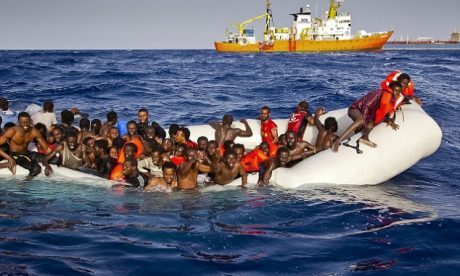Aboard the Golfo Azzurro — an urgent plea woke the ship’s doctor, John Vallentine, at 6:30 a.m. He was needed on the bridge.
The rescue ship was steaming south in the Mediterranean Sea in a race to reach a deflating rubber dinghy packed with migrants.
Italy’s coast guard had transmitted the coordinates, along with a warning the makeshift craft could soon sink.
A voice crackling across the radio told of another emergency.
A lone West African man plucked from the sea by a nearby vessel was grievously ill with a soaring fever and convulsions. “He is unconscious and not responding,” the radio voice said.
Dr. Vallentine and the crew of the Golfo Azzurro had a decision to make. They could help the stricken man, which would delay their mission to find the dinghy.
Crew members knew from experience what happens when inflatable crafts fail. Seawater and fuel pool in the middle, weighing boats down into the sea.
The liquids form a corrosive mixture that eats away at the flesh of those stuck in the crowded boat. Panic erupts and people drown.
The other option would be to continue on their course. They didn’t know the dinghy’s exact condition or whether another ship could rescue it.
And without immediate medical care, the man on the boat a half-hour west would almost certainly die.
As a professor of medical ethics back home in Australia, Dr. Vallentine delighted in challenging students with the kinds of complex moral questions that can make the practice of medicine uncomfortable.
Those often centered on issues of privacy and social responsibility, such as whether doctors should warn police about a mentally ill patient who owns guns.
In the chaos of a humanitarian disaster, such as when thousands of African and Middle Eastern migrants try to cross the Mediterranean in flimsy vessels, there are few rules about whom to help and in what order.
“It’s all about finite resources in a world of infinite need,” said Dr. Vallentine, who is 70 years old. “Do I look after this one, that 10, this 600?” Continue reading
Sources
- The Wall Street Journal, article by Drew Hinshaw, West Africa reporter for The Wall Street Journal.
- Image: Daily Mail
News category: Features.




